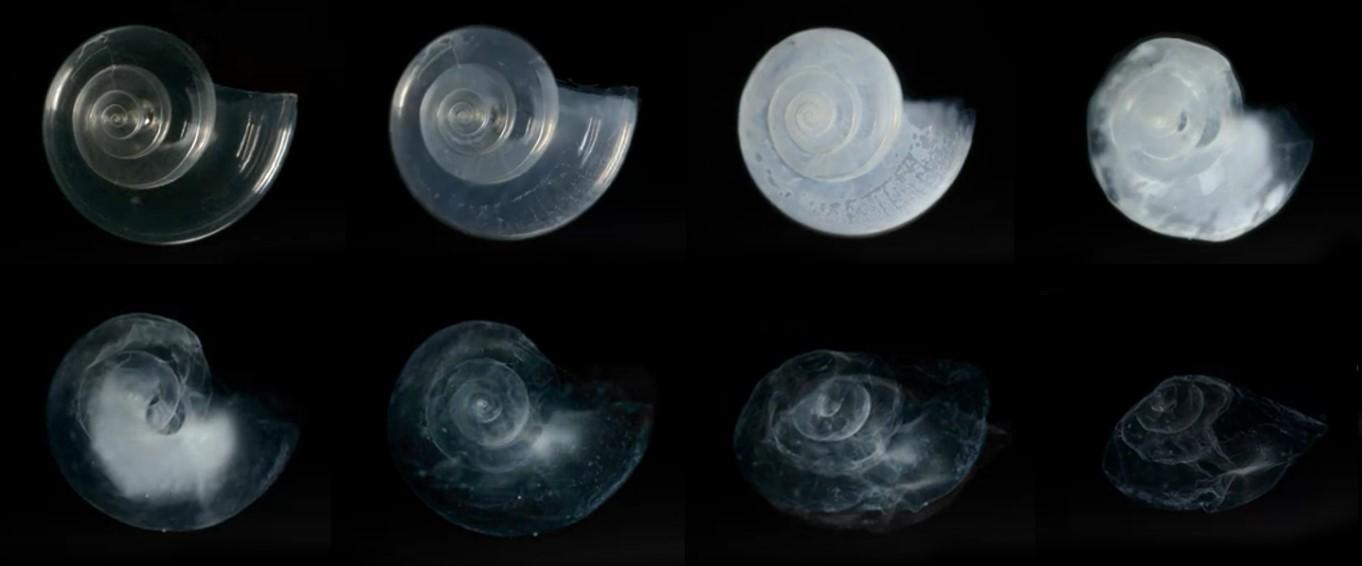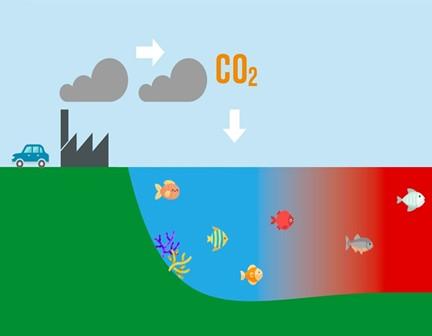
3 minute read
Ocean Acidification
By Angelica Rojas
Ocean acidification has become a growing environmental problem that has led to an imbalance of species, habitats, and the overall ocean ecosystem. Ocean acidification occurs when carbon dioxide and gas emissions rise in the air due to human fossil fuel combustion. This build up of gas reduces the pH balance in the ocean and leads to wholesale shifts in seawater carbonate chemistry. Carbonate chemistry increases the concentration of bicarbonate ions (HCO) and dissolved inorganic carbon (C1) and not only lowers pH, but also the saturation of three major carbonate minerals present in shells and skeletons (Gatusso 2).
This process of gas in the seawater alters the chemical speciation and biogeochemical cycles of elements and compounds. This includes lowering calcium carbonate saturation rates, impacting shells of plankton, benthic mollusks, echinoderms, and corals. These species undergo reduced calcification and growth rates when exposed to high carbon levels (Doney 1).
Ocean acidification also results in an increase in carbon fixation rates in some photosynthetic organisms. Coral reefs are one of the most biologically diverse on the planet. It is essential to human societies and providing ecosystem services (Hoegh-Guldberg 1). These include tourism, new biochemical compounds, fisheries, coastal protection, and building materials.
Coral reefs have different negative reactions and responses to calcification. One response which includes a decrease linear extension rate and skeletal density coral density. There is 1.26% rate of reduction in linear extension a year; that’ s a 20.6% drop in growth rate over 16 years.





It is important that coral reef keep their structures and growth rates because reefs are part of the ocean ecosystem and they balance the cycle of life for marine animals. The increase in calcification erodes the structural complexity of each reef (HoeghGuldberg 7). When the coral reefs structure diminishes overtime, this reduces the quality for habitats and diversity for marine species.
Fish provide one of the most reliable protein sources for humans as a result of easy access and the diverse variety of species in the ocean. However, with the increase of carbonate in the ocean these species will struggle to survive. The increase in carbon dioxide pollution that the seawater intakes causes it to acidity.
One research project conducted in Beverly Beach, Maryland studied a case of this decline in marine life populations. Due to acidification in the body of water, it becomes harder for fish to breathe in the low-oxygen conditions. Silverside fish in particular are increasingly dying in waters with low pH and high amounts of dissolved oxygen.
These fish are important to the ecosystem as they have both predators and prey that are impacted by their volatile fluctuation in numbers. Not only does a decline in silverside populations impact the oceans, but also a vital source of humans sustenance. With the decline of these essential fish, this throws off balance in ecological cycles in the ocean and on land (Upton 2-4).


Works Cited Doney, Scott C., et al. "Ocean acidification: the other CO2 problem." Annual review of marine science1 2009: 169-192. Gattuso, Jean-Pierre, and Lina Hansson, eds. Ocean acidification. Oxford University Press, 2011. Hoegh-Guldberg, O., et al. “Coral Reefs Under Rapid Climate Change and Ocean Acidification.” Science, American Association for the Advancement of Science, 14 Dec. 2007 Upton, John. “Ocean Acidification Making It Harder For Fish to Breathe.” Climate Central, Climate Central, 12 May 2016










